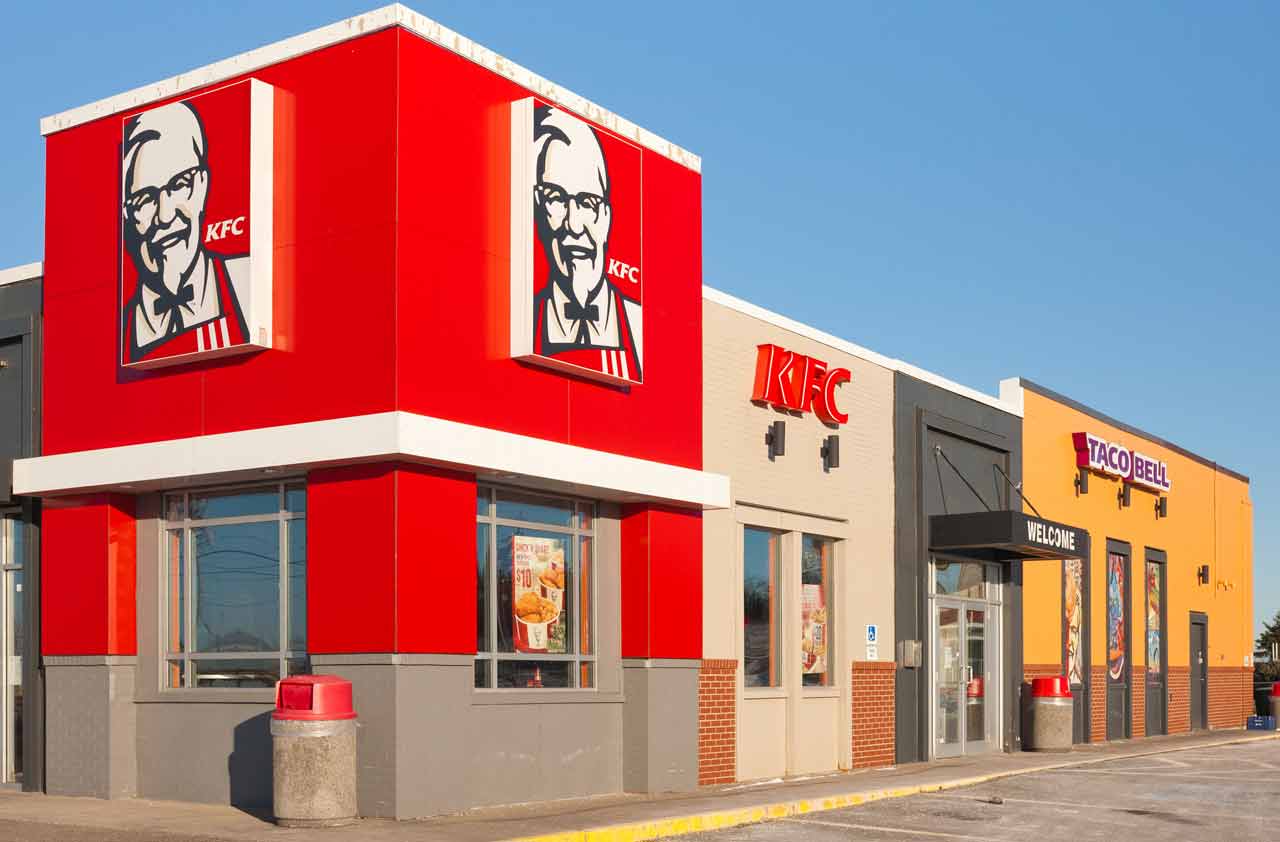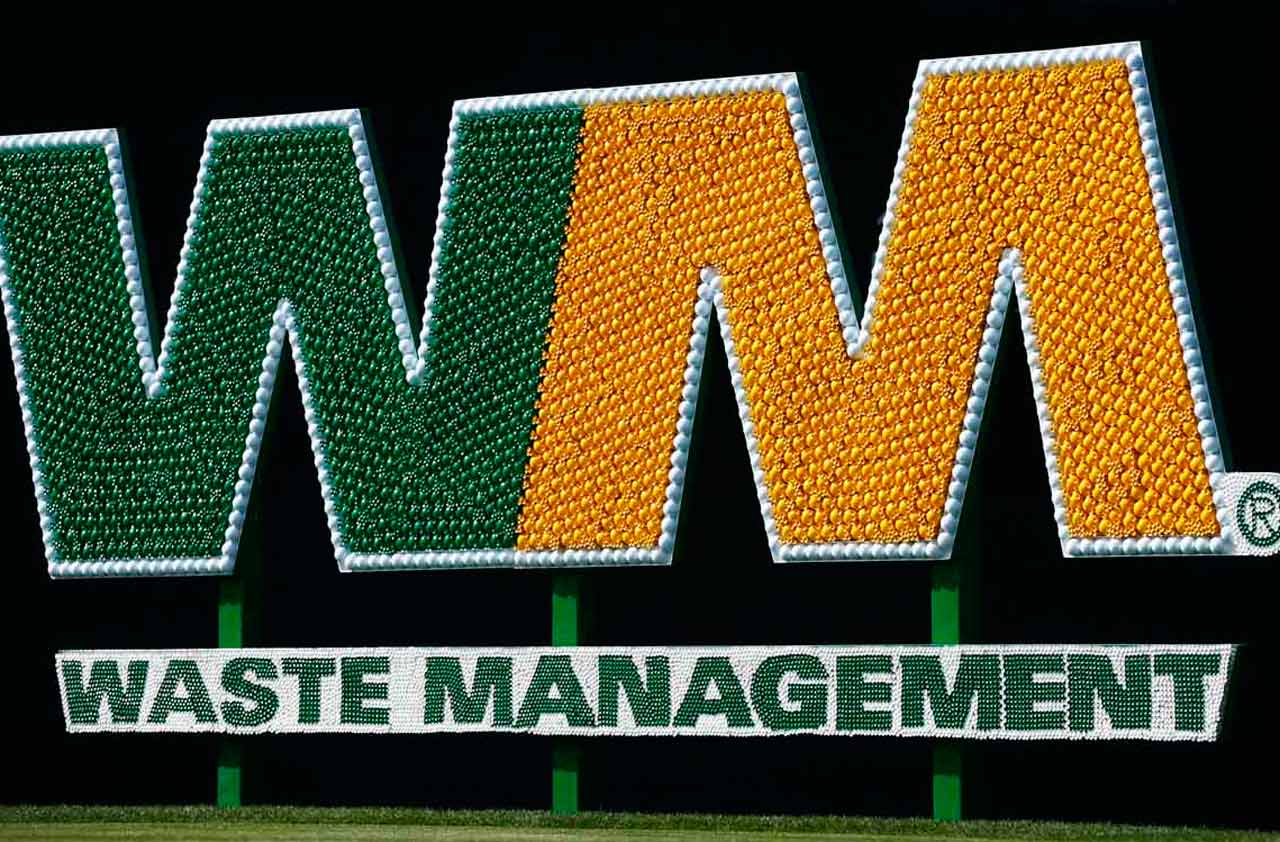7 Low-Volatility Dividend Stocks for Peace of Mind
Dividend stocks are a well-worn prescription for what ails an investor’s upset stomach.

Dividend stocks are a well-worn prescription for what ails an investor’s upset stomach. Are a cascade of troubling headlines and fears of Wall Street volatility making you nauseous? A regular stream of cash distributions can help smooth out your returns and restore your sanity.
But investors also are increasingly targeting a more direct solution to volatility: low-volatility funds. These products are designed to piece together a basket of stocks whose movements aren’t as exaggerated as the rest of the market, and they’re gaining in popularity. The iShares Edge MSCI Min Vol USA ETF (USMV), for instance, had enjoyed nearly $6 billion in net inflows through 2019’s midway point. Invesco S&P 500 Low Volatility ETF (SPLV), which is roughly a third of the size of USMV, had brought in $2 billion.
Fortunately, dividends and low volatility aren’t an either/or proposition. You can get both, and DIVCON can help us discover these more stable dividend stocks.
The DIVCON system from exchange-traded fund provider Reality Shares examines the payout health of all dividend stocks among Wall Street’s 1,200 largest companies. It does that by poring into metrics including profit growth, free cash flow (how much cash companies have left over after they meet all their obligations) and even the Altman Z-score, which helps assess a company’s likelihood of a bond default or bankruptcy. The resulting rating system (a 1-5 scale in which DIVCON 5 indicates the healthiest of payouts and DIVCON 1 indicates dividends at the most risk) provides a measure of a dividend’s sustainability and chance of future growth.
Here are seven dividend stocks for a little peace of mind. All seven stocks not only boast strong DIVCON 4 ratings, but have exhibited lower volatility and total-return outperformance (that’s price plus dividends) versus the S&P 500 over the past year.
Price, market value and yield data is as of Sept. 16. DIVCON scores and measurement data such as earnings growth, levered free cash flow (LFCF)-to-dividend ratio and Altman Z-score are as of Sept. 1. Stocks listed in order of DIVCON score. Dividend yields are calculated by annualizing the most recent payout and dividing by the share price. You can view other scores at Reality Shares’ DIVCON site.

Yum! Brands
- Market value: $33.6 billion
- Dividend yield: 1.5%
- DIVCON score: 55.50
- Yum! Brands (YUM, $110.54) is the name behind Pizza Hut, Taco Bell and KFC. And while you might think of them as decidedly American names, they have wide international appeal. KFC, for instance, boasts more than 23,000 restaurants across over 135 countries, and Pizza Hut has more than 18,000 locations in more than a hundred countries.
Those figures include its Chinese operations, which it spun off as Yum China (YUMC) in November 2016. But the rest of its operations have been doing just fine. YUM shares have beat the S&P 500 Index 94%-50% on a total-return basis since the spinoff. They’re also up 27% over the past year, versus 5% for the index, and in a mostly orderly fashion.
Yes, YUM’s dividend is modest – at 1.5%, it actually yields less than the S&P 500’s 1.9%. But DIVCON has a high opinion of the dividend’s health, as implied by its 55.50 score. (Any score between 55.25 and 64.00 earns a DIVCON 4 rating, which indicates a stock is “likely to increase their dividends in the next 12 months.”)
Yum! Brands’ levered free cash flow is 3.3 times what it pays out in dividends which means it has ample room to raise its payout. Same goes for its low earnings payout ratio of 37% – that’s the percentage of the company’s profits that go toward paying the dividend.
Also useful is a 3.2x repurchases-to-dividends ratio, which means the company spends roughly three times as much money on buying back its stock as it spends on its cash distribution. Think of that as a safety net – if Yum! Brands does find itself in a tight financial situation, it can pull back on repurchasing stock to make sure it can at least keep funding, if not growing, its regular dividend.

Sempra Energy
- Market value: $38.9 billion
- Dividend yield: 2.7%
- DIVCON score: 56.00
Investors seeking out stability often hunt down utility stocks.
The business is a natural fit for slow but steady returns. The highly regulated utility industry doesn’t allow for much growth, as rate increases need government approval and thus tend to be small. But utility companies also have a captive audience with little to no competition, for a product – electricity, gas or water – that is essential to everyday life. Thus, they tend to have reliable revenues and profits, the latter of which they use to pay juicy dividends to entice shareholders to stick around.
- Sempra Energy (SRE, $141.75) serves roughly 40 million electric and natural gas consumers via subsidiaries such as Southern California Gas Company, San Diego Gas & Electric Company, and Sempra South American Utilities – an electric company with nearly 7 million customers between Chile and Peru. It also has energy-infrastructure arms that develop, build and operate natural gas, liquefied natural gas, solar and other power facilities.
Sempra Energy’s dividend-growth track record only extends back to 2011, but it has been aggressive in that time, juicing its payout by 148%. That expansion is supported by levered FCF that’s 2.5 times what it pays out in dividends.
Utility-sector dividend stocks typically aren’t a great source of price growth, but they’ve become a popular holding amid all of 2019’s questions marks. The Utilities Select Sector SPDR Fund (XLU), which holds all of the S&P 500’s utility stocks, has delivered a total return of 21% over the past 52 weeks – quadruple the index. Sempra has been near the front of the pack, gaining 25% in that time.

Republic Services
- Market value: $27.2 billion
- Dividend yield: 1.9%
- DIVCON score: 58.25
Waste management companies also deserve a look if you want dependable dividend stocks to buy and hold for the long haul. Good times or bad, as long as you’re able to afford your home, you don’t want to let trash pile up in front of it. It’s not just unsightly; it’s a health hazard.
- Republic Services (RSG, $84.89) serves more than 14 million customers across the country, with operations spanning “349 collection operations, 207 transfer stations, 190 active landfills, 91 recycling centers, 7 treatment, recovery and disposal facilities, 11 saltwater disposal wells, and 75 landfill gas and renewable energy projects across 41 states and Puerto Rico” as of the most recent look.
In other words, Republic Services is more than just residential trash collection. It also makes money from recycling, landfills, even energy generation.
RSG has had a solid past year, producing 16% in total returns to easily outstrip the index. That has been buoyed a little by its market-average dividend, but don’t let the modest yield fool you. Thanks to dividend growth, existing shareholders are sitting on much plumper yields thanks to 10 consecutive years of payout hikes. (Not to mention, market-beating returns over the past decade also have suppressed the yield.)
DIVCON has identified plenty of reasons to believe that payout will keep growing. Not only is Republic Services generating levered FCF that’s 2.6 times what the company needs to support its dividend, but it keeps growing that cash, at roughly 20% annually over the past three years. Its annualized volatility – a measurement of its price movement – of 14.1% over the past three years is lower than the S&P 500’s 16.7%, too, according to Bloomberg and Reality Shares research.

Waste Management
- Market value: $47.5 billion
- Dividend yield: 1.8%
- DIVCON score: 60.00
Second verse, same idea as the first.
- Waste Management (WM, $111.90), North America’s largest waste management company, serves more than 20 million residential, commercial, industrial and municipal customers across the U.S.
Like Republic Services, the recession-proof nature of its business makes Waste Management a company you can hold on to for ages. Also like Republic Services, WM is more than collection – indeed, that business accounts for only a little more than half of its revenues. The company also offers recycling, transfer and landfill services, among others.
Waste Management is a serial dividend raiser that has boosted its payout for 16 consecutive years. Yet its earnings payout ratio is under 50%, which means WM has the resources for continued increases. Same goes for levered free cash flow, which is more than five times what the firm needs to fulfill its current obligation.
It also sports lower annualized volatility than the S&P 500 and has significantly outperformed the index over the past year with roughly 26% returns to the index’s 5%.

McDonald’s
- Market value: $157.5 billion
- Dividend yield: 2.2%
- DIVCON score: 60.75
- McDonald’s (MCD, $207.40) has been one of the most reliable dividend stocks on the market for decades, improving its dole on an annual basis for 42 consecutive years. That puts it among the ranks of the Dividend Aristocrats – dividend growth stocks that have delivered at least a quarter-century of uninterrupted payout hikes.
No wonder: McDonald’s has a resilient business that has survived numerous economic downturns. MCD even managed to grow its profits during the Great Recession – earnings per share improved by 26% year-over-year in 2008, and 8% in 2009.
And as its 401% total returns over the past decade would indicate … it can provide plenty of upside during bull markets, too. (The S&P 500 is up 242% in that same time frame.)
Unlike many longtime dividend growers, whose pace tends to slow after a few decades, MCD has delivered the goods in recent years. In 2018, it increased its dividend by nearly 15%; that was roughly twice the 7.4% raise it gave investors in 2017.
McDonald’s payout ratio of 60% is only a little elevated, leaving space for decent future hikes going forward. Levered FCF is more than twice what it needs, also implying some breathing room. Noteworthy, too, is a Bloomberg dividend health score of 24, compared to 15 for all dividend payers among Wall Street’s 1,200 largest stocks. Bloomberg dividend health scores range from -100 to 100, with negative scores indicating an unhealthy dividend with low potential for future payout increases.

Evergy
- Market value: $15.1 billion
- Dividend yield: 3.0%
- DIVCON score: 61.00
- Evergy (EVRG, $64.14) is a Kansas-based electric utility that services 1.6 million customers in Kansas and Missouri through its Kansas City Power & Light Company and Westar Energy subsidiaries. It’s not an everyday name in the utility sector, but it still has a few traits worth crowing about.
The company has consistently increased dividend over the past 15 years, albeit under various operating names – Evergy itself is the new corporate name following the 2018 merger of Westar and Great Plains Energy.
“The debate is starting to evolve (favorably) around what the rate base growth / EPS growth looks like post ’21 (after the financial benefits of the merger from synergies and buybacks are in the rear view mirror),” writes Evercore ISI analyst Greg Gordon, who has a Buy rating on shares.
Dividend growth likely won’t be red-hot in the future, but a 77% earnings payout ratio means there’s at least marginal room for hikes going forward. It does have a high 2.7 repurchases-to-dividends ratio, so EVRG can always cut down on buybacks should it need a backstop. And again, annualized volatility is lower than the market, at 15.7% versus the S&P 500’s 16.7%.

W. R. Berkley
- Market value: $13.0 billion
- Dividend yield: 0.6%
- DIVCON score: 61.75
Property casualty insurance specialist W. R. Berkley (WRB, $70.90) has been a standout in its area of the market. WRB’s 36% total return over the past 52 weeks not only beats the S&P 500 – it’s several times better than the iShares U.S. Insurance ETF’s (IAK) 9% return.
Berkley operates in two segments – Insurance, and Reinsurance & Monoline Excess – across 53 companies. It operates primarily in the United States, but also does business in the rest of North America, Europe, South America, Australia, Asia and South Africa. That geographic diversification helps stabilize the company’s operational results.
The thing to note about WRB is that it has an unusual dividend policy. While it does offer a small quarterly cash dividend that has been growing for years, more recently, it also has distributed large special cash dividends to augment those payouts. For instance, in 2017, its quarterly dividend was 9.33 cents per share, but it also paid two 33.33-cent special dividends. Last year, it delivered 10 cents per share quarterly, but also offered up three 33.33-cent special payouts.
That makes gauging Berkley’s dividend health a little more difficult. But based on its dividends from the first half of 2019, WRB may pay out a total of $1.43 per share this year. That would be only half of analysts’ projections for the company’s profits for 2019. It’s also well within Berkley’s levered free cash flow means as well.
Profit and prosper with the best of Kiplinger's advice on investing, taxes, retirement, personal finance and much more. Delivered daily. Enter your email in the box and click Sign Me Up.
Kyle Woodley is the Editor-in-Chief of WealthUp, a site dedicated to improving the personal finances and financial literacy of people of all ages. He also writes the weekly The Weekend Tea newsletter, which covers both news and analysis about spending, saving, investing, the economy and more.
Kyle was previously the Senior Investing Editor for Kiplinger.com, and the Managing Editor for InvestorPlace.com before that. His work has appeared in several outlets, including Yahoo! Finance, MSN Money, Barchart, The Globe & Mail and the Nasdaq. He also has appeared as a guest on Fox Business Network and Money Radio, among other shows and podcasts, and he has been quoted in several outlets, including MarketWatch, Vice and Univision. He is a proud graduate of The Ohio State University, where he earned a BA in journalism.
You can check out his thoughts on the markets (and more) at @KyleWoodley.
-
 'Donroe Doctrine' Pumps Dow 594 Points: Stock Market Today
'Donroe Doctrine' Pumps Dow 594 Points: Stock Market TodayThe S&P 500 rallied but failed to turn the "Santa Claus Rally" indicator positive for 2026.
-
 The Wealth Equation: Balancing Money and Stress
The Wealth Equation: Balancing Money and StressSponsored Don’t let assets be a liability that strains your family.
-
 Is Your Emergency Fund Running Low? Here's How to Bulk It Up
Is Your Emergency Fund Running Low? Here's How to Bulk It UpIf you're struggling right now, you're not alone. Here's how you can identify financial issues, implement a budget and prioritize rebuilding your emergency fund.
-
 'Donroe Doctrine' Pumps Dow 594 Points: Stock Market Today
'Donroe Doctrine' Pumps Dow 594 Points: Stock Market TodayThe S&P 500 rallied but failed to turn the "Santa Claus Rally" indicator positive for 2026.
-
 Stocks Struggle for Gains to Start 2026: Stock Market Today
Stocks Struggle for Gains to Start 2026: Stock Market TodayIt's not quite the end of the world as we know it, but Warren Buffett is no longer the CEO of Berkshire Hathaway.
-
 Stocks End Volatile Year on a Down Note: Stock Market Today
Stocks End Volatile Year on a Down Note: Stock Market TodayAfter nearing bear-market territory in the spring, the main market indexes closed out the year with impressive gains.
-
 Stocks Extend Losing Streak After Fed Minutes: Stock Market Today
Stocks Extend Losing Streak After Fed Minutes: Stock Market TodayThe Santa Claus Rally is officially at risk after the S&P 500's third straight loss.
-
 Santa Claus Rally at Risk as Tech Stocks Slump: Stock Market Today
Santa Claus Rally at Risk as Tech Stocks Slump: Stock Market TodayThe Nasdaq Composite and Dow Jones Industrial Average led today's declines as investors took profits on high-flying tech stocks.
-
 Gold and Silver Shine as Stocks Chop: Stock Market Today
Gold and Silver Shine as Stocks Chop: Stock Market TodayStocks struggled in Friday's low-volume session, but the losses weren't enough to put the Santa Claus Rally at risk.
-
 The Santa Claus Rally Officially Begins: Stock Market Today
The Santa Claus Rally Officially Begins: Stock Market TodayThe Santa Claus Rally is officially on as of Wednesday's closing bell, and initial returns are positive.
-
 'Humbug!' Say Consumers, Despite Hot GDP: Stock Market Today
'Humbug!' Say Consumers, Despite Hot GDP: Stock Market Today"The stock market is not the economy," they say, but both things are up. Yet one survey says people are still feeling down in the middle of this complex season.

